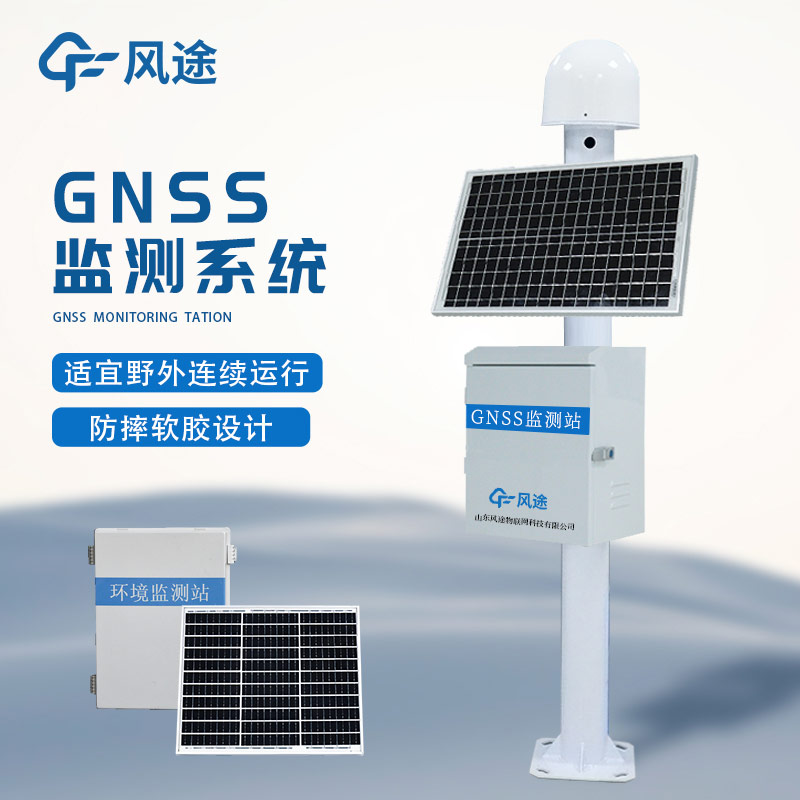Shandong Fengtu IOT Technology Co., Ltd
Sales Manager:Ms. Emily Wang
Cel,Whatsapp,Wechat:+86 15898932201
Email:info@fengtutec.com
Add:No. 155 Optoelectronic Industry Accelerator, Gaoxin District, Weifang, Shandong, China

Sales Manager:Ms. Emily Wang
Cel,Whatsapp,Wechat:+86 15898932201
Email:info@fengtutec.com
Add:No. 155 Optoelectronic Industry Accelerator, Gaoxin District, Weifang, Shandong, China
time:2024-12-18 09:36:22 source:Weather Station viewed:435 time
The GNSS Monitoring Station can detect potential dangers in a timely manner by monitoring mountain displacements with high precision. It can collect the three-dimensional coordinates of monitoring points on the mountain surface in real time, with an accuracy reaching the centimeter or even millimeter level. These monitoring points are distributed at key parts such as the slope surface and the edge of cracks, and continuously send position information at a set frequency. The displacement change of the collected coordinates is analyzed to calculate the displacement amount and rate. Once it exceeds the preset threshold, an alarm will be issued. For example, for a mountain monitoring point beside a highway in a certain mountainous area, if the horizontal displacement exceeds 10 centimeters within a short time and the rate accelerates, it indicates the risk of landslide.
The GNSS Monitoring Station is integrated with other monitoring means to comprehensively judge the stability of the mountain. When combined with the meteorological monitoring system, during heavy rainfall weather (such as the rainfall exceeding 50 millimeters per hour), if there is an obvious change in the mountain displacement at the same time, the system will raise the alarm level, because rainfall will increase the weight of the mountain and reduce the shear strength of the soil. At the same time, when used in conjunction with the internal monitoring equipment of the geotechnical body, the internal sensors measure parameters such as pore water pressure and earth pressure. When the pore water pressure rises and there is displacement at the monitoring points on the mountain surface, it more accurately indicates the danger of landslide.
This system has an alarm and emergency response mechanism. There are multiple levels of alarm thresholds. A yellow alarm is issued when the displacement amount is 5 - 10 centimeters, and a red alarm is issued when it exceeds 10 centimeters and the rate is fast. Once the alarm is triggered, it can automatically link to the emergency response, notify departments such as geological disaster prevention and traffic management and nearby residents, and also provide detailed displacement data to assist in the formulation of emergency rescue plans, effectively preventing the harm of mountain landslides.

what is automatic weather station, automatic weather station is an automated version of a traditional weather station. It is a modern device capable of measuring, storing and uploading meteorological data to measure a variety of meteorological parameters....
The key to measuring liquid level by radar level meter is to choose the right antenna. There are 3 types of commonly used non-contact radar level meter antennas: flared, parabolic and planar antennas. Horn antenna transmits spherical wave through point source, which is suitable for liquid level meas...
The FT-WQX5S Five Elements Micro Meteorological Instrument is quite an impressive piece of equipment!...
A tunnel visibility sensor is a device used to measure visibility data in tunnels and is one of the main tools used to monitor and improve traffic safety in road tunnels.Tunnel visibility sensors measure visibility in the air primarily through the use of a laser beam. By measuring the scattering and...